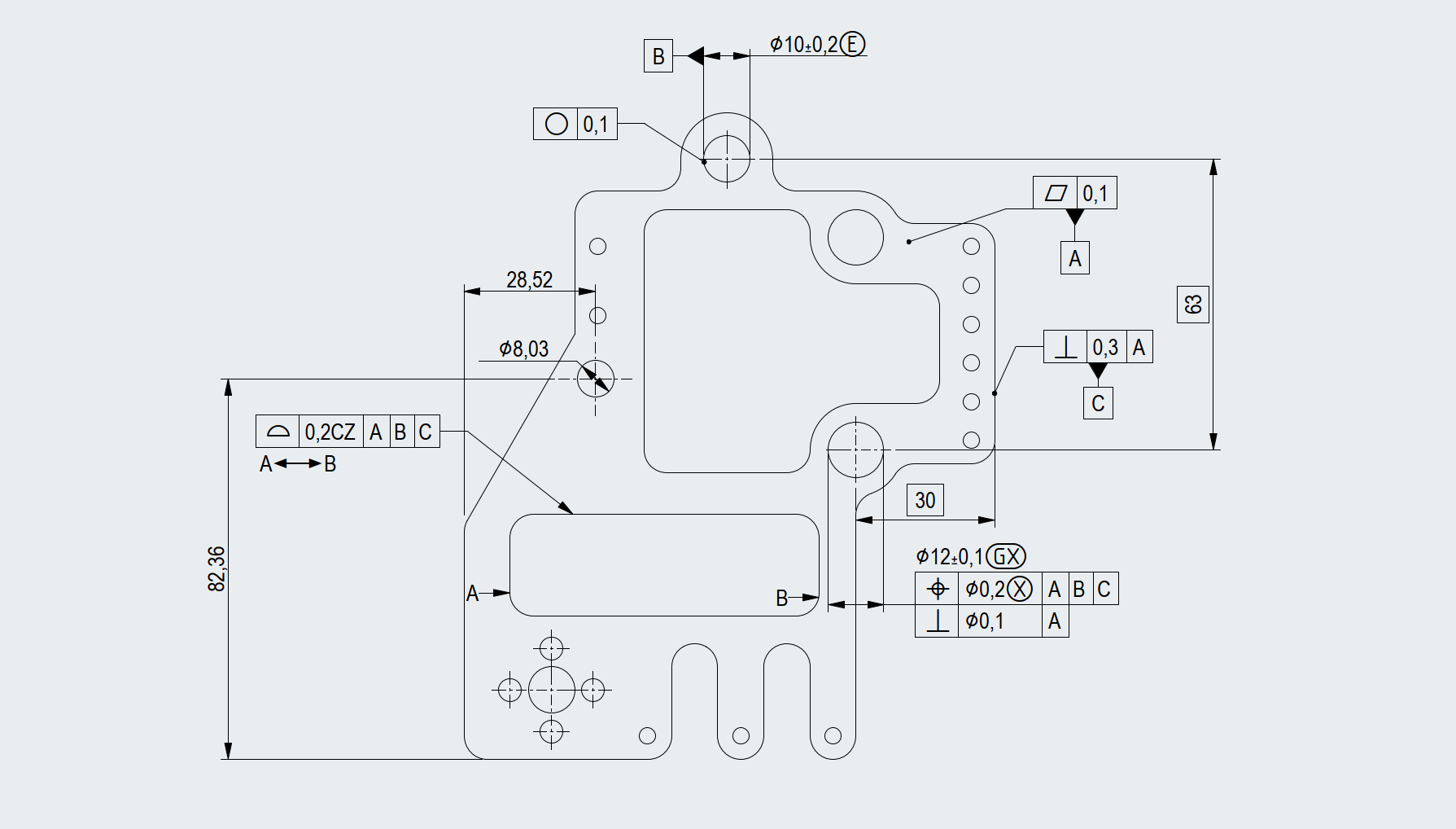Herken je deze problemen?
Meerdere medewerkers lezen en begrijpen vorm- en plaatstoleranties op verschillende wijze. Er is geen eenduidigheid.
Hoe kan ik de functie van mijn werkstuk beter en eenduidig beschermen?
Zo kunnen wij jullie helpen
Eerst schatten we het niveau van elke deelnemer zo goed mogelijk in. Van daaruit komen we via praktische oefeningen tot eenvormigheid.
Doel van de opleiding
Het hoofddoel van de opleiding is om iedereen op een lijn te krijgen wat betreft het toepassen en interpreteren van vorm- en plaatstoleranties. Tijdens deze opleiding is er tijd en ruimte voor onderlinge discussies. Op deze manier wordt de communicatie aangescherpt en komt iedereen op dezelfde lijn te staan.
Op het einde van de tweedaagse opleiding zal de deelnemer:
- in staat zijn om gegeven vorm- en plaatstoleranties correct te interpreteren.
- in staat zijn om vorm- en plaatstoleranties zelf functioneel toe te passen bij het formuleren van productspecificaties en het maken van tekeningen.
Doelgroep
Deze opleiding is geschikt voor een divers publiek, bijvoorbeeld technisch tekenaars, werkvoorbereiders, kwaliteitscontroleurs en anderen die in aanraking komen met vorm- en plaatstoleranties.
Inhoud
Inleiding
- Vorm- en plaatstoleranties en 2-punts bematen, een vergelijking
- ISO GPS termen en definities, Omhullend principe en basisregels
- ISO 14405 linear size modifiers en non-size dimensions
- ISO 22081-2021 Algemene geometrische specificatie
Referenties
- Volgens de norm ISO 5459-2011
- Vrijheidsgraden
- Referenties, referentiesystemen en sequenties
- Deelreferenties
GD&T symbolen
- Volgens de norm ISO 1101-2017 - ISO 5458-2018 - ISO 2692-2021
- Rechtheid, vlakheid, rondheid, cilindriciteit
- Loodrechtheid, hoekzuiverheid en evenwijdigheid
- Plaatszuiverheid, coaxialiteit en symmetrie
- Multi segment tolerancing en patronen
- Profielzuiverheid lijn, profielzuiverheid vlak
- Circulaire slag en totale slag
- Maximum materiaal principe, geprojecteerde tolerantiezone en functionele gages
- Direction feature, intersection plane, orientation plane and collection plane
- Contacting feature, variable distance voor common referenties
Theoretische en praktische oefeningen weergegeven in Model-Based Definition PMI 3D modellen
Duur van opleiding
De volledige opleiding duurt 2 dagen, die niet opeenvolgend hoeven te zijn. Onze opleidingsuren zijn flexibel.
Getuigenissen
Veelgestelde vragen
Ontdek antwoorden op veelvoorkomende vragen om snel en gemakkelijk inzicht te krijgen in onze diensten en oplossingen.
De laatste jaren zijn de normen flink uitgebreid. Dit heeft ervoor gezorgd dat het onmogelijk is geworden om alles in detail te behandelen tijdens de standaard 2-daagse opleiding.
We zijn altijd bereid om een intake-oefening op te stellen om het huidige kennisniveau te peilen. Dit helpt ons om een leerpad te creëren dat is afgestemd op individuele behoeften.
Ja, wij zijn altijd bereid om klantspecifiek te werken. Wij zijn dan ook flexibel en kunnen snel schakelen om aan de wensen van de klant te voldoen.
We onderzoeken je vraag grondig en laten je weten wat voor ons haalbaar is of hoe ons kennisnetwerk je kan helpen.
Indien gewenst kunnen de verschillen tijdens de opleiding aangehaald worden.
De basisopleiding is ook beschikbaar volgens de ASME-norm.
Ja. Als dit te veel werk inhoudt, stellen we een offerte op.
Heb je interesse in deze opleiding?
Ontdek hoe we je kunnen helpen jouw doelen te bereiken.

